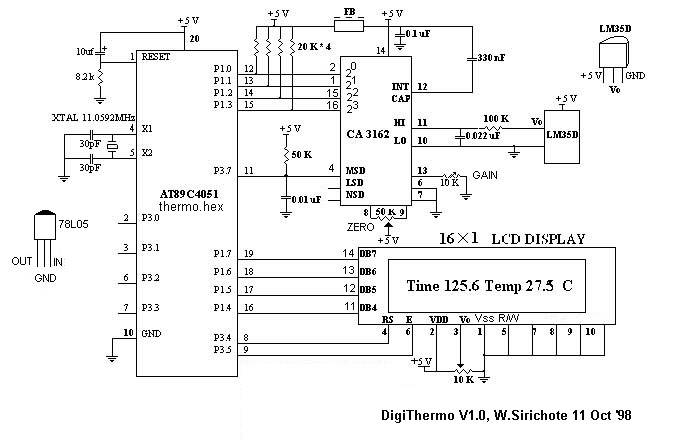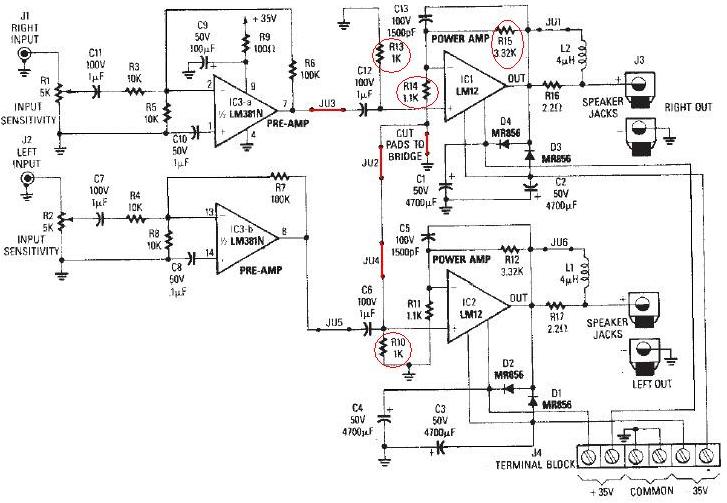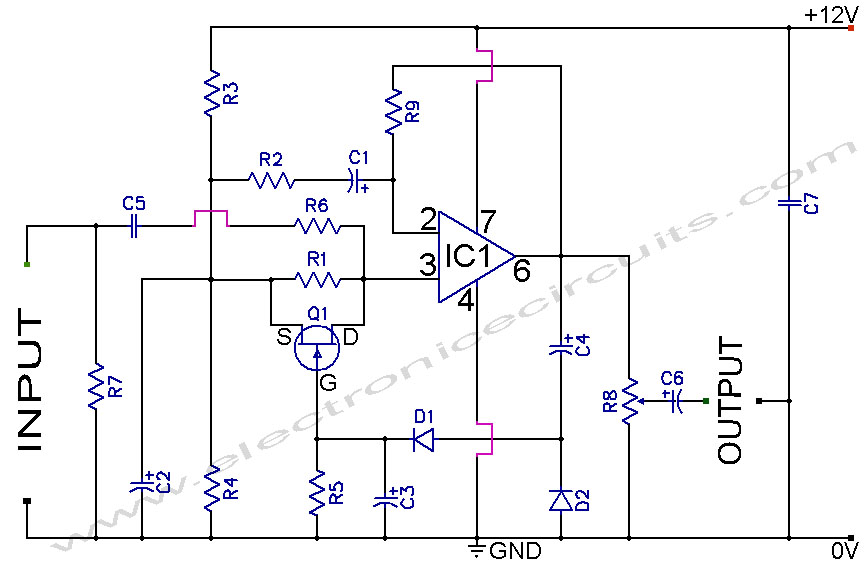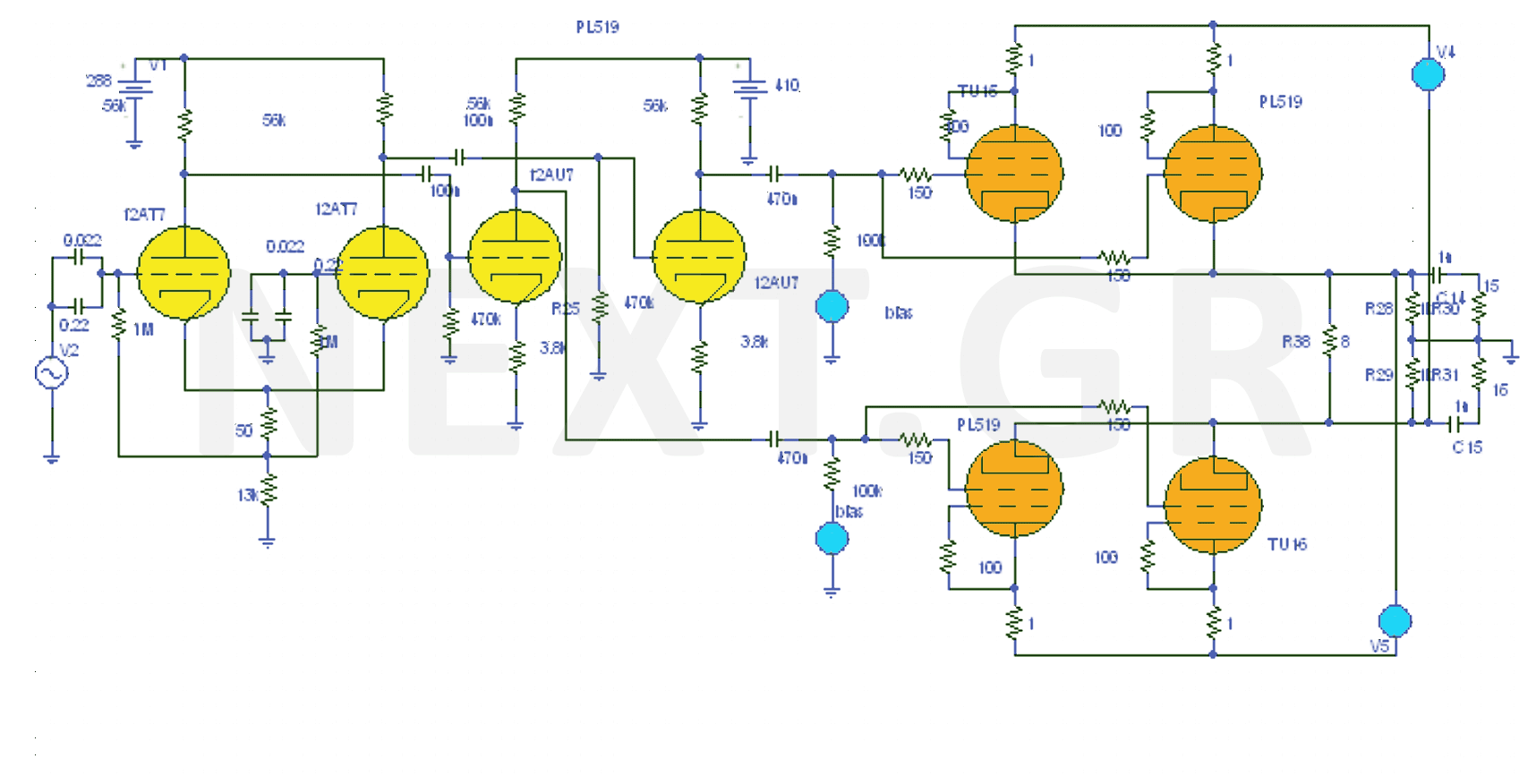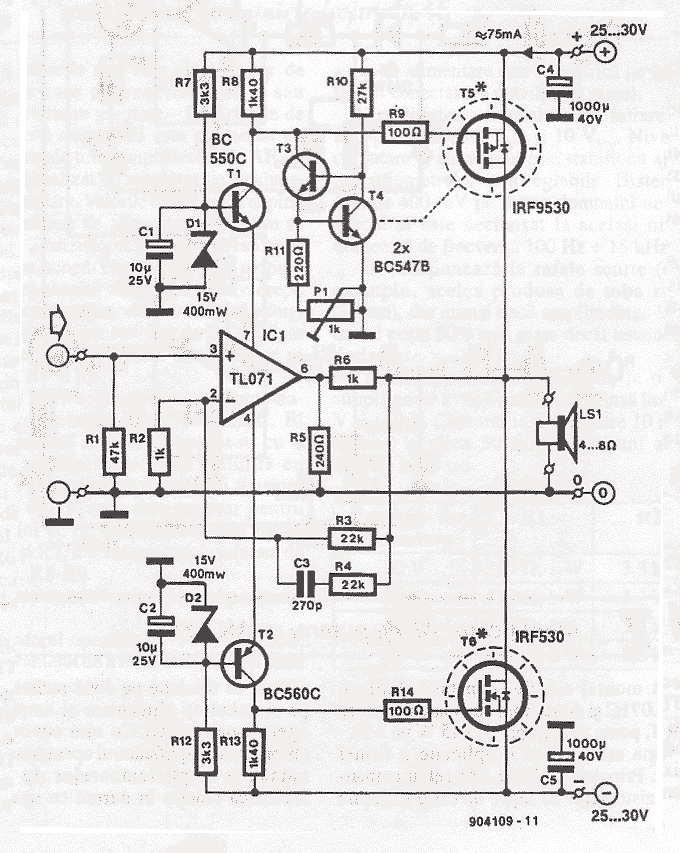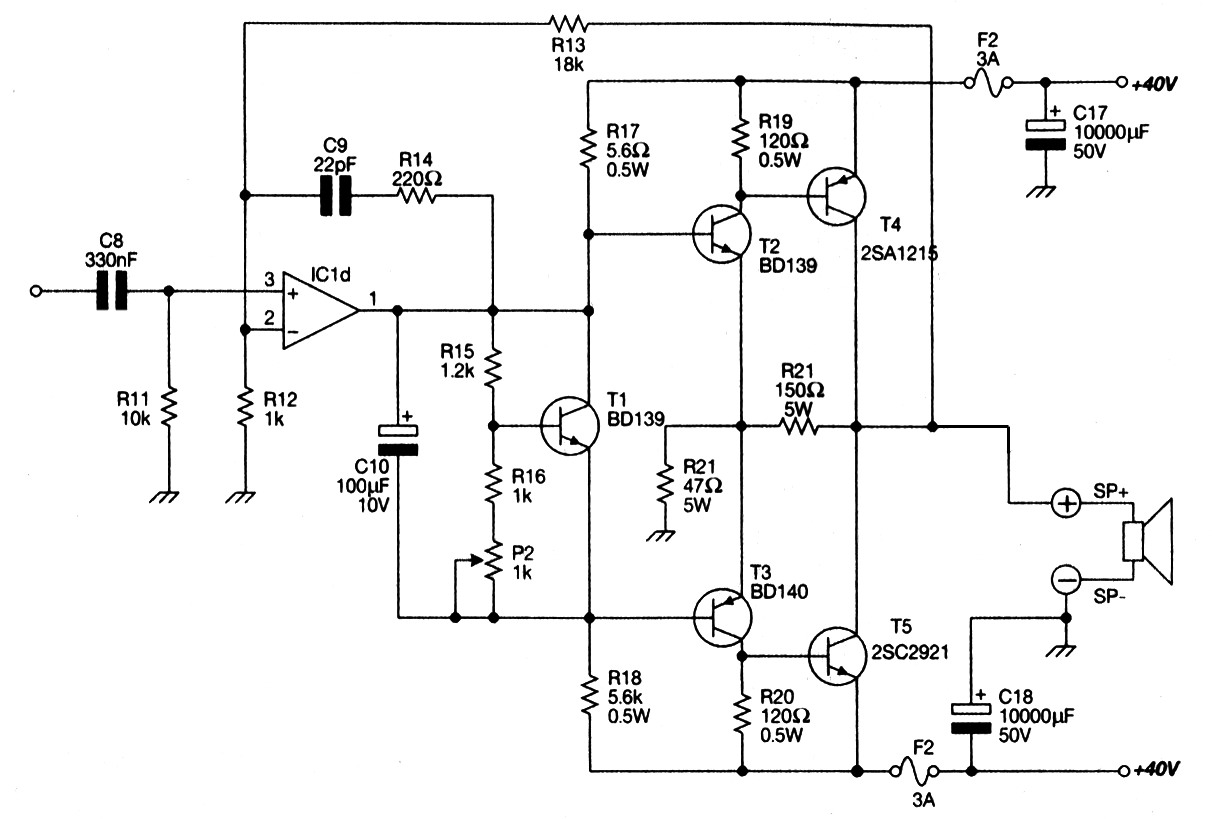
Linear Video Amplifier SECAM PAL and NTSC
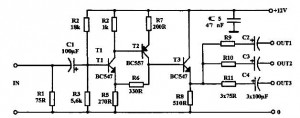
A buffered video amplifier is utilized to connect a video player to a receiver or monitor TV over long cable lengths, which may lead to a reduction in signal amplitude and, consequently, a decline in image quality. This amplifier can also facilitate the connection of multiple receivers to a single player or VCR, effectively preventing the degradation of picture quality. It addresses issues such as increased load on the player or signal power loss in the cable. The amplifier is a simple linear design characterized by a low noise level and a broad bandwidth transfer (minimum 20 MHz), providing a gain of approximately 6 dB. It can be powered by any stabilized voltage source between 12-15 volts (in specific cases, it can also draw power from the VCR's power supply). The current consumption is minimal, at 20 mA when operating at 12 V. The circuit is designed to operate only with AV connections, where video and audio signals are transmitted separately, and is not suitable for use with high-frequency antenna cables. It is essential to integrate the video amplifier within the video signal line while maintaining a separate audio connection. The use of two amplifiers is permissible, with one dedicated to the video line and the other to the audio line.
The buffered video amplifier circuit is designed to enhance signal integrity in video transmission systems. It employs a linear amplification method to maintain low noise levels, ensuring that the output signal closely resembles the input signal without introducing significant distortion. The bandwidth of at least 20 MHz allows it to accommodate the frequency range of standard video signals, making it suitable for various video formats.
Powering the amplifier with a stabilized voltage between 12 and 15 volts ensures reliable operation, while the low current consumption of 20 mA at 12 V minimizes the impact on the overall system power budget. The design's compatibility with AV connections, which separate audio and video signals, is critical to its functionality. This separation prevents interference between the audio and video signals, which could lead to degradation of signal quality.
In applications where multiple outputs are required, such as connecting several monitors to a single video source, the buffered video amplifier can be employed to split the signal without loss of quality. The ability to use two amplifiers—one for video and another for audio—further enhances flexibility in system design, allowing for tailored amplification based on specific requirements.
Overall, the buffered video amplifier is a vital component in video distribution systems, ensuring high-quality signal transmission over extended distances while accommodating various configurations and setups.Buffered video amplifier is used wherever the use of video player to the receiver / monitor TV with a long cable may cause a drop in signal amplitude and as a consequence, the deterioration in image quality. The amplifier can also be used to connect multiple receivers to one player or VCR. In any case, it prevents deterioration of picture quality as eating out edstvie greater load the player, or loss of signal power in the cable. This is a simple linear amplifier with low noise level with a broad band transfer (min 20 MHz) and increased ~ 6 dB. You can connect to any source of stabilized voltage 12-15 (in special cases even from the power supply VCR).
Current consumption of a small, 20 mA at 12 V. The scheme works only when using the compounds of AV where video and audio signals are sent separately. Not suitable for joints HF antenna cable. Make sure to include the video amplifier in the line of the video, while leaving the audio connection.
It is possible to use two amplifiers, one of which will be designed for the line video other audio. 🔗 External reference
The buffered video amplifier circuit is designed to enhance signal integrity in video transmission systems. It employs a linear amplification method to maintain low noise levels, ensuring that the output signal closely resembles the input signal without introducing significant distortion. The bandwidth of at least 20 MHz allows it to accommodate the frequency range of standard video signals, making it suitable for various video formats.
Powering the amplifier with a stabilized voltage between 12 and 15 volts ensures reliable operation, while the low current consumption of 20 mA at 12 V minimizes the impact on the overall system power budget. The design's compatibility with AV connections, which separate audio and video signals, is critical to its functionality. This separation prevents interference between the audio and video signals, which could lead to degradation of signal quality.
In applications where multiple outputs are required, such as connecting several monitors to a single video source, the buffered video amplifier can be employed to split the signal without loss of quality. The ability to use two amplifiers—one for video and another for audio—further enhances flexibility in system design, allowing for tailored amplification based on specific requirements.
Overall, the buffered video amplifier is a vital component in video distribution systems, ensuring high-quality signal transmission over extended distances while accommodating various configurations and setups.Buffered video amplifier is used wherever the use of video player to the receiver / monitor TV with a long cable may cause a drop in signal amplitude and as a consequence, the deterioration in image quality. The amplifier can also be used to connect multiple receivers to one player or VCR. In any case, it prevents deterioration of picture quality as eating out edstvie greater load the player, or loss of signal power in the cable. This is a simple linear amplifier with low noise level with a broad band transfer (min 20 MHz) and increased ~ 6 dB. You can connect to any source of stabilized voltage 12-15 (in special cases even from the power supply VCR).
Current consumption of a small, 20 mA at 12 V. The scheme works only when using the compounds of AV where video and audio signals are sent separately. Not suitable for joints HF antenna cable. Make sure to include the video amplifier in the line of the video, while leaving the audio connection.
It is possible to use two amplifiers, one of which will be designed for the line video other audio. 🔗 External reference
